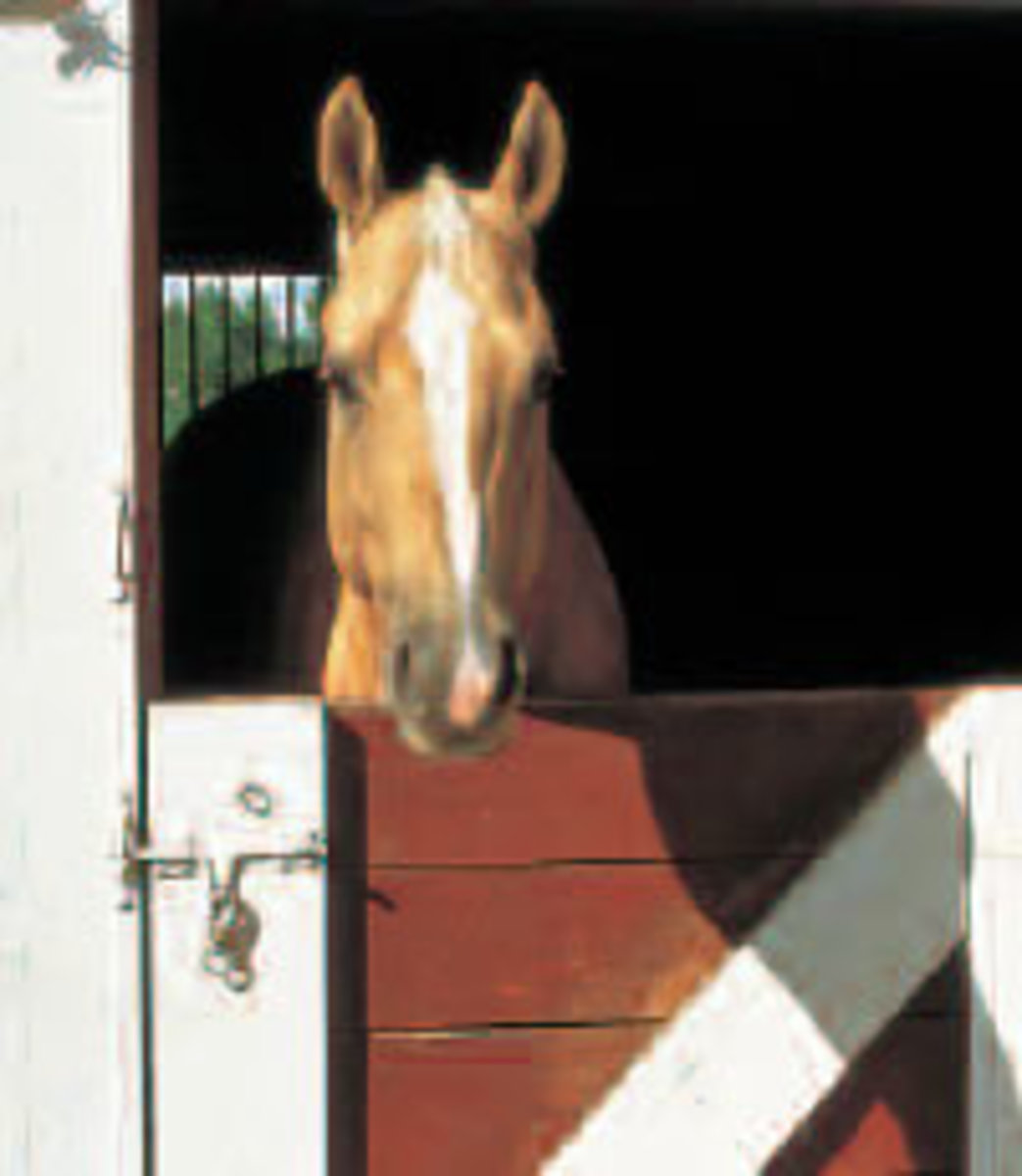Home > Horse Care > What Ammonia Smells Mean
What Ammonia Smells Mean
- June 2, 2025
- ⎯ Equus

Step into your horse’s stall and take a deep breath: You want to detect sweet aromas like hay, fresh shavings and maybe a whiff of sweet feed. What you don’t want to smell is the acrid stench of ammonia.
An ammonia smell is more than just unpleasant; you are inhaling a noxious gas released by bacteria as they break down organic materials in urine and feces. Ammonia inhibits the movement of cilia, the tiny finger-like projections that line the airway to sweep fluids and foreign particles up and away from the lungs. When the cilia are compromised, the horse’s natural respiratory defense mechanism is weakened, increasing his risk of disease.
The best defense against ammonia in a horse’s stall is regular, thorough mucking. This includes removing all manure and wet bedding and leaving the floors or mats exposed until they are dry.
A stall that never seems to dry out isn’t getting enough ventilation. Try opening doors or windows until you create enough cross breeze to dry out the stall within a half day, or place a large fan so that it safely draws out stagnant air.
If the smell persists when the stall is dry, you may face a much bigger job: Dirt floors that are saturated in urine may need to be dug up and replaced, or the drainage system underneath your mats may need an overhaul.
A traditional remedy for minor ammonia smells is the application of lime powder (calcium hydroxide), which reduces moisture and raises the pH, killing bacteria. But lime can be extremely caustic and must be handled with care. Instead, many horsekeepers opt for one of several commercial stall-conditioning products now available that can achieve similar results without the potential downsides.
Whatever product you choose, follow the manufacturer’s instructions and heed any warnings on the label. Most recommend sprinkling a light layer of powder or granules directly on the floor then covering with clean shavings.





